How to Replace Roof Tiles
Are you looking for information on how to replace broken roof tiles? This guide will provide you with all of the information needed to replace common broken interlocking roof tiles. These are the most common types of roofing material in the UK and can be found on millions of homes nationwide.
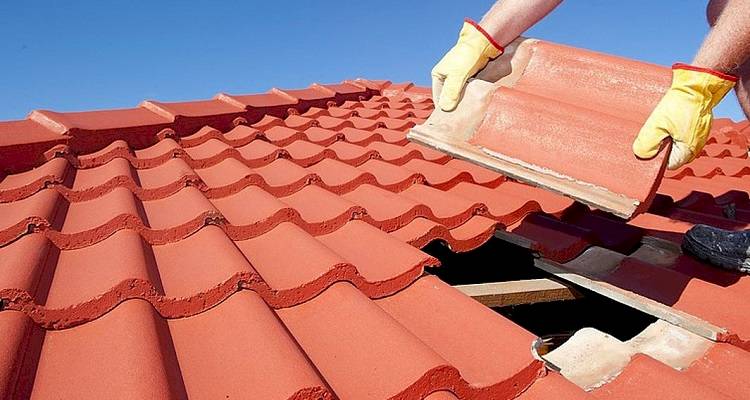
Table of Contents
What Tools Do I Need to Replace Roof Tiles?
Replacing roof tiles is quite a simple task that doesn’t require many tools. Below is a list of the tools you will need to replace roof tiles:
- Hammer
- Ladders
- Pry bar
What Safety Equipment Do I Need to Replace Roof Tiles?
When replacing a broken roof tile, you will need to attend the roof using ladders. It is important that this is done safely. Your ladders should be placed on flat, level ground. You should ask for someone to hold your ladders to keep them steady if required.
Replacing roof tiles is quite a hands-on job. Although it is not essential, you may wish to wear safety gloves when replacing roof tiles to avoid any possibilities of injuring your hands in the process.
What Materials Do I Need to Replace Roof Tiles?
A roof tile replacement job is quite straightforward and there are not many materials needed to successfully complete the job. Below is a list of the materials needed to replace your roof tiles:
- New roof tiles
- Nails (optional)
How to Prepare for Replacing Roof Tiles
To replace your roof tiles, you will firstly need to remove the old broken roof tiles from the roof to make room for the new tiles.
Removing your roof tiles is quite simple. You simply need to lift away any overlapping tiles that may be holding the broken tile in place and then, once it’s free, lift away the broken tile from the roof.
If your tiles are nailed down, you may need to use a pry bar to lift the overlapping pieces and remove the nail before you can push them out of the way to free the broken piece.
Once you have removed the broken tile, you should now have a gap in your roof where you can install your new tile.
How to Replace Roof Tiles - Step by Step Guide
Below is a step-by-step guide on how to replace tiles on a roof:
Step 1
The first step when replacing your roof tiles is to remove the existing broken roof tile to make room for the new tile. This can be done via the preparation step listed above. If your roof tiles are nailed down, you may need to pry the nails away before attempting to remove the broken tile.
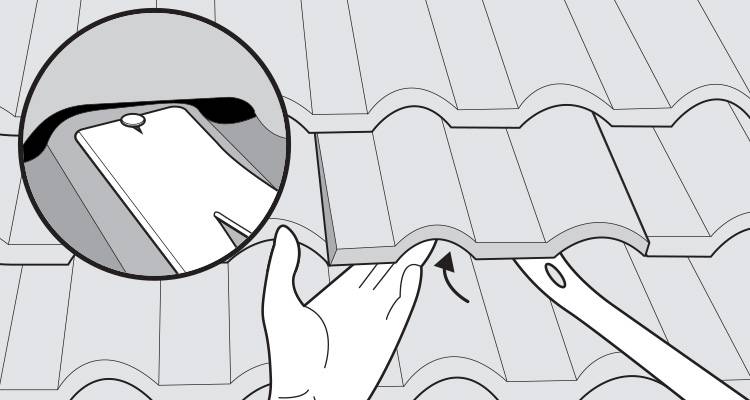
Step 2
Once you have removed the broken tile and you now have a gap in the roofing area, you can now replace the roof tile. Place your new roof tile into the gap where the old tile used to be.
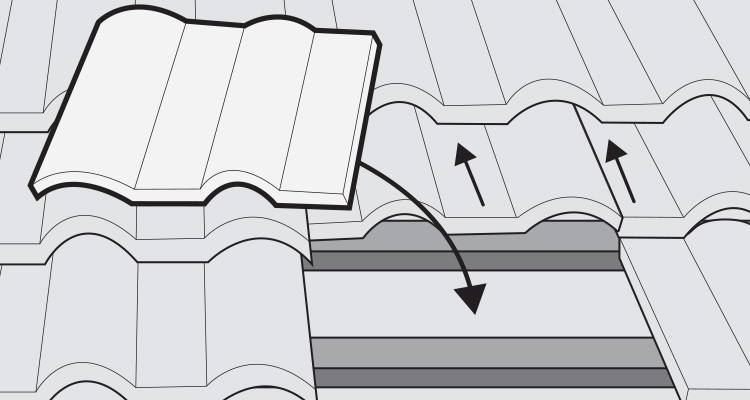
Step 3
Once you have put the new tile in place, you will need to secure it by replacing the overlapping tiles to their correct position. To do this, use a hammer to lift the overlapping tiles slightly and then you can pull them back into their correct place.
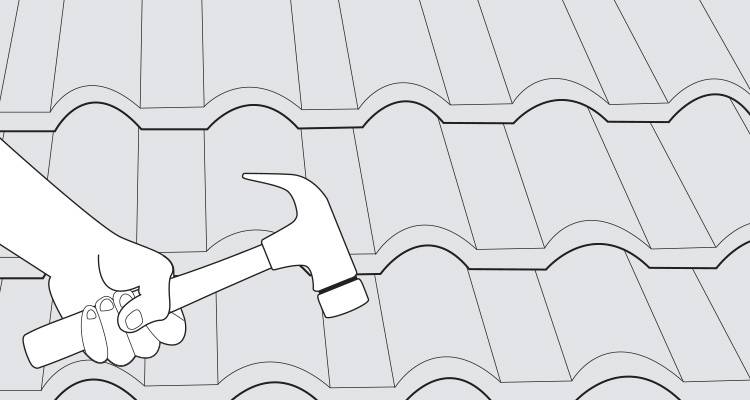
Step 4
This step is optional. If you would like to secure your roof tiles further, you can nail your new tile into place using a hammer.
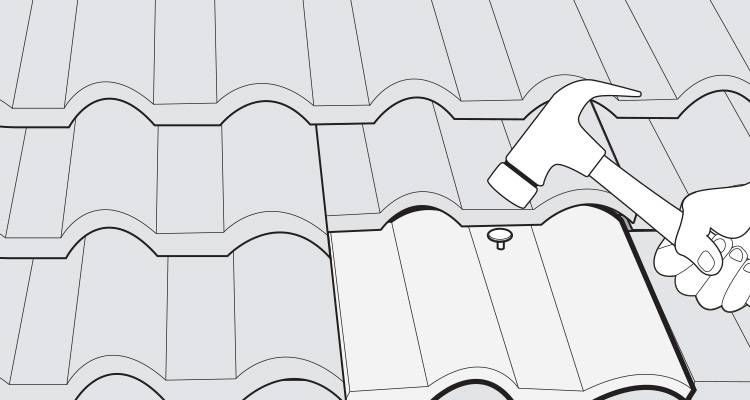
Types of Roof Tiles
There are a number of different types of common roof tiles used in the UK. Below is a list of the different types of roof tile that you’re likely to come across in the UK:
Clay Tiles
Natural clay tiles are beautiful as they retain their natural colour before maturing into a darker, richer shade. The rate of this colour change depends on the manufacturer of the tiles and the environment in which your house resides. Clay tiles tend to vary in colour and this can be very aesthetically pleasing. Clay tiles tend to be quite durable and are known to last a long time.
PROS
✔ Durable
✔ Beautiful colours
✔ Natural
CONS
✖ Colour may deteriorate over time
Concrete Roof Tiles
Concrete tiles are usually surface treated which means they are protected as best possible from any potential environmental deterioration. Concrete tiles tend to be coloured depending on your preferences. Unfortunately, though, the colours can usually deteriorate over time. The treatment used on concrete tiles usually ensure that they have a nice long life. The protective coating minimises dust, moss, dirt, and contamination.
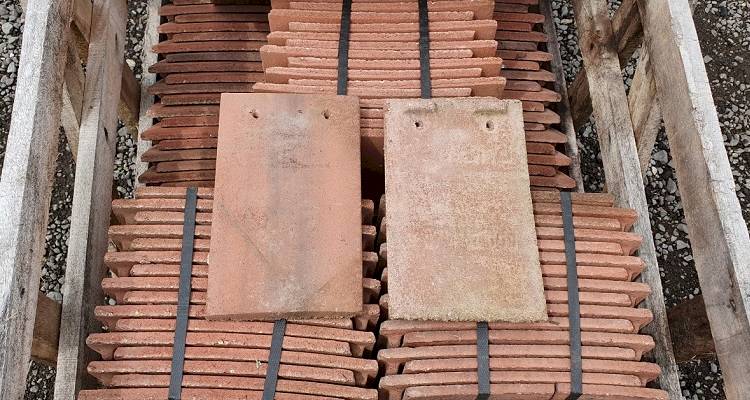
PROS
✔ Last a long time
✔ Benefit from protective coating
✔ Can be coloured based on your preferences
CONS
✖ Colours tend to fade rapidly
Interlocking Roof Tiles
These types of tiles tend to be the quickest and easiest types of tile to install on your roof. They also benefit from costing less than most other tile types. This is why these types of tile are among the most popular types of roofing tile in the UK. Interlocking roof tiles are usually made from concrete and so can also be coloured based on your preferences.
PROS
✔ Quick and easy to install
✔ Low costs compared to other types
✔ Can be coloured based on your preferences
CONS
✖ Coloured tiles can fade quite quickly
Large Format Roof Tiles
These types of tiles are larger than other types and so the installation time is much quicker and less fiddly. The larger tiles also require less weight and support form underneath. These tiles can come in both clay or concrete varieties and have the benefit of coming in a number of different styles and designs. These can include various colours, textures, and finishes.
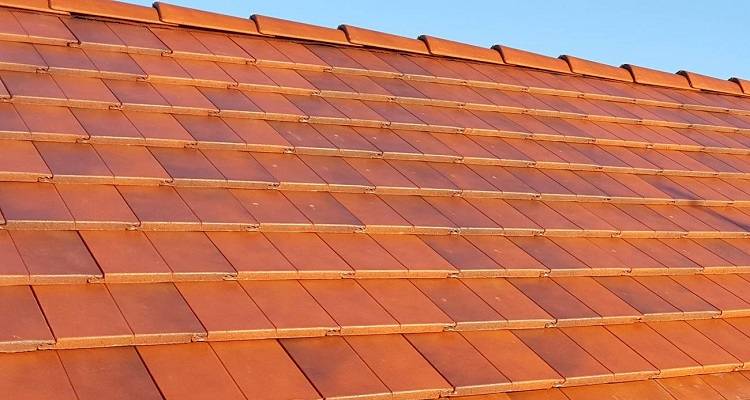
PROS
✔ Can be installed quickly
✔ Require less weight and support from underneath
✔ Come in a variety of designs
✔ Come in a variety of textures
✔ Come in a variety of colours
✔ Modern looking
CONS
✖ Colours and patterns can deteriorate or fade over time
Plain Roof Tiles
Plain roof tiles have a pleasing traditional look to them. They can be made of concrete or clay. The compact size of plain tiles allows them to be double lapped which means that their density is increased to protect the interior of your home from water or leaks. These types of tiles tend to take a little longer to install than interlocking types.
PROS
✔ Traditional aesthetic
✔ Can come in a variety of colours
✔ Offer great protection from water leaks
CONS
✖ Usually take longer to install than other tile types
How to Remove Roof Tile
If you have a broken roof tile that needs to be replaced, then you will firstly need to remove the broken roof tile.
To remove the broken tile, you will firstly need to push up any tiles that overlap it so that they are out of the way. You can do this using the rubber end of a common hammer. Gently tap the overlapping tile pieces to push them out of the way. You should then be able to simply pull the broken tile away from the roof and remove it.
If your tiles are nailed down, you may need to use a pry bar to lift the overlapping pieces and remove the nail before you can push them out of the way to free the broken piece.








